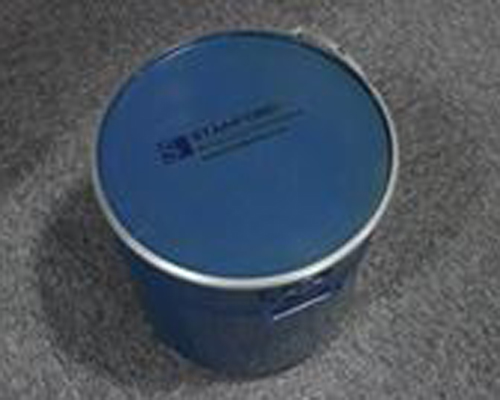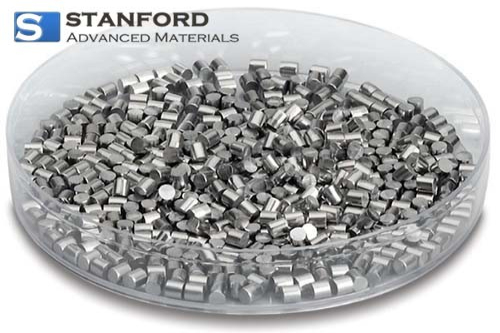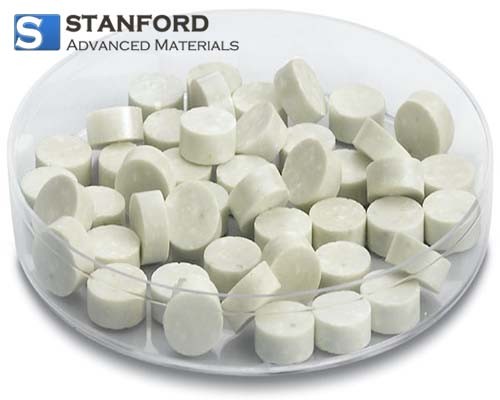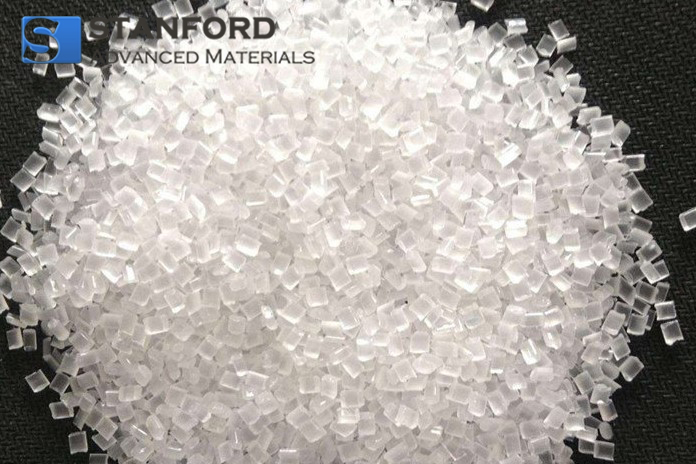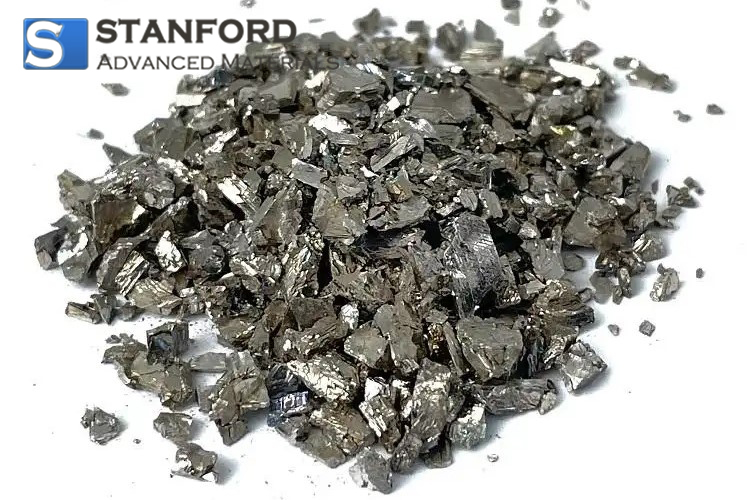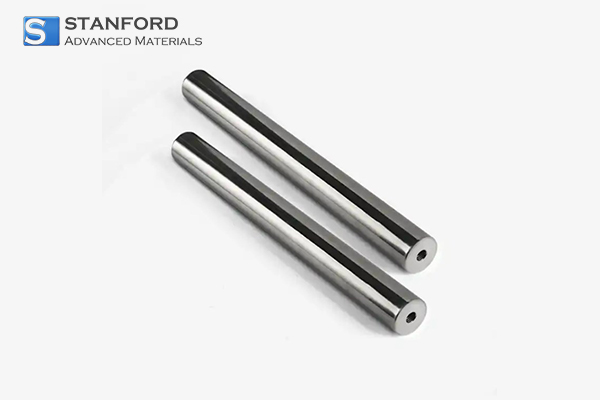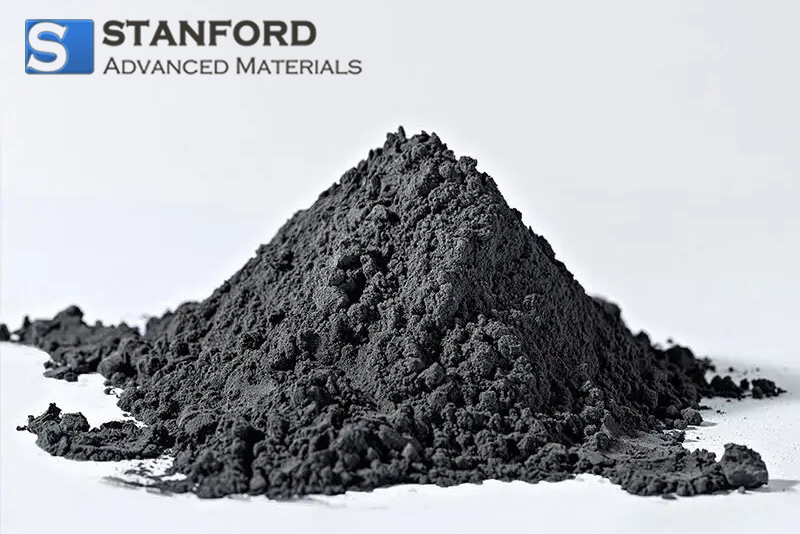SECTION 1. IDENTIFICATION
Product Name: Gadolinium(III) Nitrate Hydrate
CAS #: 94219-55-3
Relevant identified uses of the substance: Scientific research and development
Supplier details:
Stanford Advanced Materials
E-mail: sales@samaterials.com
Tel: (949) 407-8904
Address: 23661 Birtcher Dr., Lake Forest, CA 92630 U.S.A.
SECTION 2. HAZARDS IDENTIFICATION
2.1 Classification of the substance or mixture
Classification according to Regulation (EC) No 1272/2008
GHS03 flame over circle
Ox. Sol. 2 H272 May intensify fire; oxidiser.
GHS07
Skin Irrit. 2 H315 Causes skin irritation.
Eye Irrit. 2 H319 Causes serious eye irritation.
STOT SE 3 H335 May cause respiratory irritation.
Classification according to Directive 67/548/EEC or Directive 1999/45/EC
Xi; Irritant
R36/37/38: Irritating to eyes, respiratory system and skin.
O; Oxidising
R8: Contact with combustible material may cause fire.
Information concerning particular hazards for human and environment: N/A
Other hazards that do not result in classification No data available
2.2 Label elements
Labelling according to Regulation (EC) No 1272/2008 The substance is classified and labelled
according to the CLP regulationHazard pictograms
GHS03 GHS07
Signal word Danger
Hazard statements
H272 May intensify fire; oxidiser.
H315 Causes skin irritation.
H319 Causes serious eye irritation.
H335 May cause respiratory irritation.
Precautionary statements
P221 Take any precaution to avoid mixing with combustibles.
P210 Keep away from heat, hot surfaces, sparks, open flames and other ignition sources. No
smoking.
P220 Keep/Store away from clothing/combustible materials.
P305+P351+P338 IF IN EYES: Rinse cautiously with water for several minutes. Remove contact
lenses, if present and easy to do. Continue rinsing.
P405 Store locked up.
P501 Dispose of contents/container in accordance with local/regional/national/international
regulations.
2.3 Other hazards
Results of PBT and vPvB assessment
PBT: N/A
vPvB: N/A
SECTION 3. COMPOSITION/INFORMATION ON INGREDIENTS
3.1 Substances
CAS# Designation:
94219-55-3 Gadolinium(III) nitrate hydrate
Identification number(s):
EC number: 233-437-2
SECTION 4. FIRST AID MEASURES
4.1 Description of first aid measures
If inhaled:
Supply patient with fresh air. If not breathing, provide artificial respiration. Keep patient warm. Consult
doctor if symptoms persist.
Seek immediate medical advice.
In case of skin contact:
Instantly wash with water and soap and rinse thoroughly.
Seek immediate medical advice.
In case of eye contact:
Rinse opened eye for several minutes under running water. Then consult doctor.
If swallowed:
Seek medical treatment.
4.2 Most important symptoms and effects, both acute and delayed:No data available
4.3 Indication of any immediate medical attention and special treatment needed:
No data available
SECTION 5. FIREFIGHTING MEASURES
5.1 Extinguishing media
Suitable extinguishing agents Use carbon dioxide, extinguishing powder or foam. Water may be
ineffective but may be used for cooling exposed containers.
For safety reasons unsuitable extinguishing agents Halocarbon extinguisher
5.2 Special hazards arising from the substance or mixture
This substance is an oxidizer and its heat of reaction with reducing agents or combustibles may cause
ignition.
If this product is involved in a fire, the following can be released:
Nitrogen oxides (NOx)
Gadolinium oxide
5.3 Advice for firefighters
Protective equipment:
Wear self-contained breathing apparatus.
Wear full protective suit.
SECTION 6. ACCIDENTAL RELEASE MEASURES
6.1 Personal precautions, protective equipment and emergency procedures
Use personal protective equipment. Keep unprotected persons away.
Ensure adequate ventilation
6.2 Environmental precautions: Do not allow product to enter drains, sewage systems, or other water
courses system or water bodies.
6.3 Methods and materials for containment and cleanup: Ensure adequate ventilation.
Prevention of secondary hazards:
Acts as an oxidizing agent on organic materials such as wood, paper and fats
Keep away from combustible material.
6.4 Reference to other sections
See Section 7 for information on safe handling
See section 8 for information on personal protection equipment.
See Section 13 for information on disposal.
SECTION 7. HANDLING AND STORAGE
7.1 Precautions for safe handling
Handle under dry protective gas.
Keep containers tightly sealed.
Store in cool, dry place in tightly closed containers.
Ensure good ventilation/exhaustion at the workplace.
Information about protection against explosions and fires:
Substance/product can reduce the ignition temperature of flammable substances.
This substance is an oxidizer and its heat of reaction with reducing agents or combustibles may cause
ignition.
7.2 Conditions for safe storage, including any incompatibilities
Requirements to be met by storerooms and containers: No special requirements.Information about storage in one common storage facility:
Store away from flammable substances.
Store away from reducing agents.
Do not store with organic materials.
Store away from metal powders.
Store away from water.
Further information about storage conditions:
Store under dry inert gas.
This product is hygroscopic.
Keep container tightly sealed.
Store in cool, dry conditions in well-sealed containers.
Protect from humidity and keep away from water.
7.3 Specific end use(s) No data available
SECTION 8. EXPOSURE CONTROLS/PERSONAL PROTECTION
Additional information about design of technical systems:
Properly operating chemical fume hood designed for hazardous chemicals and having an average
face velocity of at least 100 feet per minute.
8.1 Control parameters
Components with critical values that require monitoring at the workplace:
None.
Additional information: No data
8.2 Exposure controls
Personal protective equipment
General protective and hygienic measures
The usual precautionary measures should be adhered to in handling the chemicals.
Keep away from foodstuffs, beverages and food.
Instantly remove any soiled and impregnated garments.
Wash hands during breaks and at the end of the work.
Avoid contact with the eyes and skin.
Maintain an ergonomically appropriate working environment.
Breathing equipment: Use breathing protection with high concentrations.
Recommended filter device for short term use:
Use a respirator with type N95 (USA) or PE (EN 143) cartridges as a backup to engineering controls.
Risk assessment should be performed to determine if airpurifying
respirators are appropriate. Only use equipment tested and approved under appropriate government
standards.
Protection of hands:
Inspect gloves prior to use.
The selection of the suitable gloves does not only depend on the material, but also on further marks of
quality and varies from manufacturer to manufacturer.
Material of gloves Impervious gloves
Penetration time of glove material (in minutes) No data available
Eye protection:
Safety glasses
Face protection
Body protection: Protective work clothing.
SECTION 9. PHYSICAL AND CHEMICAL PROPERTIES9.1 Information on basic physical and chemical properties
Appearance:
Form: Crystalline
Colour: White
Smell: Odorless
Odor threshold: No data available.
pH: N/A
Melting point/Melting range: 92 °C
Boiling point/Boiling range: No data available
Sublimation temperature / start: No data available
Inflammability (solid, gas) Contact with combustible material may cause fire.
Ignition temperature: No data available
Decomposition temperature: No data available
Self-inflammability: No data available.
Danger of explosion: No data available.
Critical values for explosion:
Lower: No data available
Upper: No data available
Steam pressure: N/A
Density at 20 °C 2,406 g/cm
3
Relative density No data available.
Vapor density N/A
Evaporation rate N/A
Solubility in / Miscibility with
Water: No data available
Partition coefficient (n-octanol/water): No data available.
Viscosity:
Dynamic: N/A
Kinematic: N/A
9.2 Other information No data available
SECTION 10. STABILITY AND REACTIVITY
10.1 Reactivity May intensify fire; oxidiser.
10.2 Chemical stability Stable under recommended storage conditions.
Thermal decomposition / conditions to be avoided: No decomposition if used and stored according to
specifications.
10.3 Possibility of hazardous reactions
Reacts with reducing agents
Reacts with flammable substances
10.4 Conditions to avoid No data available
10.5 Incompatible materials:
Flammable substances
Reducing agents
Water/moisture
Organic materials
Metal powders
10.6 Hazardous decomposition products:
Nitrogen oxides (NOx)
Gadolinium oxide
SECTION 11. TOXICOLOGICAL INFORMATION
11.1 Information on toxicological effects
Acute toxicity:
The following RTECS statement/statements refer to the anhydrous compound:
The Registry of Toxic Effects of Chemical Substances (RTECS) contains acute toxicity data for this
substance.
LD/LC50 values that are relevant for classification:
Oral LD50 3805 mg/kg (rat)
Skin irritation or corrosion: Causes skin irritation.
Eye irritation or corrosion: Causes serious eye irritation.
Sensitization: No sensitizing effect known.
Germ cell mutagenicity: No effects known.
Carcinogenicity: No classification data on carcinogenic properties of this material is available from the
EPA, IARC, NTP, OSHA or ACGIH.
Reproductive toxicity: No effects known.
Specific target organ system toxicity - repeated exposure: No effects known.
Specific target organ system toxicity - single exposure: May cause respiratory irritation.
Aspiration hazard: No effects known.
Subacute to chronic toxicity: No effects known.
Additional toxicological information: To the best of our knowledge the acute and chronic toxicity of this
substance is not fully known.
SECTION 12. ECOLOGICAL INFORMATION
12.1 Toxicity
Aquatic toxicity: No data available
12.2 Persistence and degradability No data available
12.3 Bioaccumulative potential No data available
12.4 Mobility in soil No data available
Additional ecological information:
Water hazard class 1 (Self-assessment): slightly hazardous for water.
Do not allow undiluted product or large quantities to reach groundwater, water courses, or sewage
systems.
Avoid transfer into the environment.
12.5 Results of PBT and vPvB assessment
PBT: N/A
vPvB: N/A
12.6 Other adverse effects No data available
SECTION 13. DISPOSAL CONSIDERATIONS
13.1 Waste treatment methods
Recommendation
Hand over to disposers of hazardous waste.
Must be specially treated under adherence to official regulations.
Consult official regulations for proper disposal.
Uncleaned packagings:
Recommendation: Disposal must be made according to official regulations.
SECTION 14. TRANSPORT INFORMATION
UN-Number
ADR, IMDG, IATA UN1477
14.2 UN proper shipping name
ADR 1477 NITRATES, INORGANIC, N.O.S. (Gadolinium(III) nitrate hydrate)
IMDG, IATA NITRATES, INORGANIC, N.O.S. (Gadolinium(III) nitrate hydrate)
14.3 Transport hazard class(es)
ADR
Class 5.1 (O2) Oxidising substances.
Label 5.1
IMDG, IATA
Class 5.1 Oxidising substances.
Label 5.1
Packing group
ADR, IMDG, IATA III
14.5 Environmental hazards: N/A
14.6 Special precautions for user Warning: Oxidising substances.
Kemler Number: 50
EMS Number: F-A,S-Q
14.7 Transport in bulk according to Annex II of MARPOL73/78 and the IBC
Code N/A
Transport/Additional information:
ADR
Excepted quantities (EQ): E1
Limited quantities (LQ) 5 kg
Transport category 3
Tunnel restriction code E
UN "Model Regulation": UN1477, NITRATES, INORGANIC, N.O.S. (Gadolinium(III) nitrate hydrate),
5.1,
III
SECTION 15. REGULATORY INFORMATION
15.1 Safety, health and environmental regulations/legislation specific for the substance or mixture
Australian Inventory of Chemical Substances Substance is not listed.
Standard for the Uniform Scheduling of Drugs and Poisons Substance is not listed.
National regulations
Information about limitation of use:
Employment restrictions concerning young persons must be observed.
For use only by technically qualified individuals.
Water hazard class: Water hazard class 1 (Self-assessment): slightly hazardous for water.
Other regulations, limitations and prohibitive regulations
ELINCS (European List of Notified Chemical Substances) Substance is not listed.
Substance of Very High Concern (SVHC) according to the REACH Regulations (EC) No. 1907/2006.
Substance is not listed.
The conditions of restrictions according to Article 67 and Annex XVII of the Regulation (EC) No
1907/2006 (REACH) for the manufacturing, placing on
the market and use must be observed.
Substance is not listed.
Annex XIV of the REACH Regulations (requiring Authorisation for use) Substance is not listed.15.2 Chemical safety assessment: A Chemical Safety Assessment has not been carried out.
SECTION 16. OTHER INFORMATION
Safety Data Sheet according to Regulation (EC) No. 1907/2006 (REACH). The above information is
believed to be correct but does not purport to be all inclusive and shall be used only as a guide. The
information in this document is based on the present state of our knowledge and is applicable to the
product with regard to appropriate safety precautions. It does not represent any guarantee of the
properties of the product.

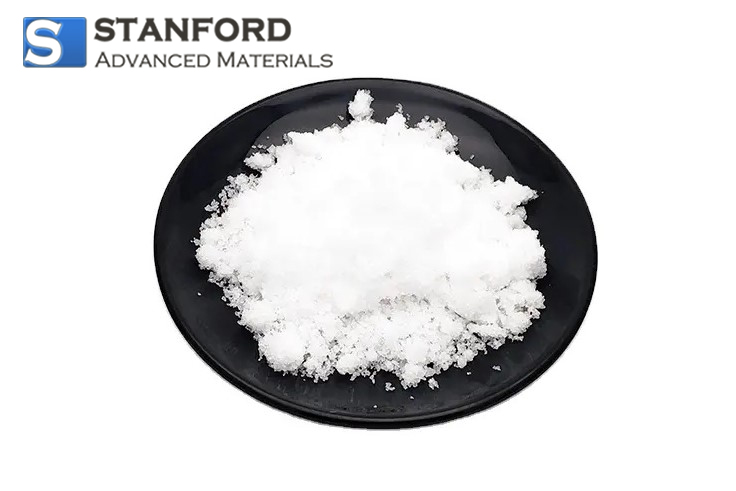
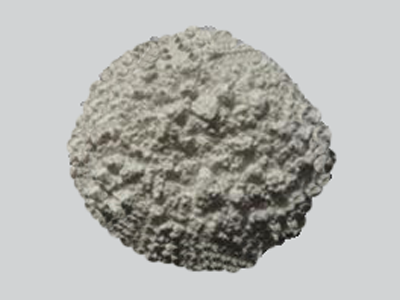
3.JPG)
